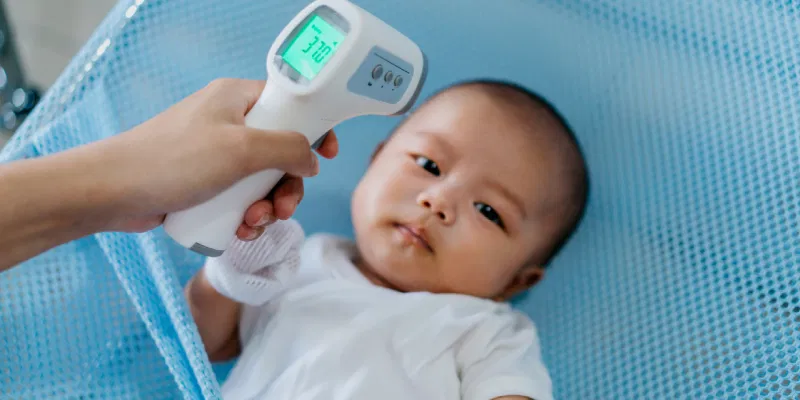As a parent, ensuring your baby’s comfort and safety is always a top priority. One common concern, especially during warmer months or in heated indoor environments, is whether your baby is overheating. Babies are more sensitive to temperature changes than adults, and their bodies are less efficient at regulating heat. Overheating can lead to discomfort, dehydration, or even more serious conditions like heat exhaustion or Sudden Infant Death Syndrome (SIDS). To help you keep your little one safe, here are the signs your baby may be too hot and tips to prevent overheating.
Signs Your Baby Is Overheating
- Flushed or Red Skin
If your baby’s skin appears red or flushed, especially on the face, chest, or back, it could be a sign they’re too warm. This is often one of the first visible indicators of overheating. - Sweating or Damp Hair
While it’s normal for babies to sweat a little, excessive sweating, particularly around the neck, back, or scalp, is a clear sign they’re too hot. Check for dampness on their clothing or bedding. - Rapid Breathing or Heartbeat
Overheating can cause your baby to breathe faster or have an elevated heart rate. If you notice these symptoms, it’s important to cool them down immediately. - Lethargy or Irritability
A baby who is too hot may become unusually fussy, irritable, or overly sleepy. If your baby seems less responsive or more tired than usual, overheating could be the cause. - Warm to the Touch
Feel your baby’s chest, back, or neck. If their skin feels unusually warm or clammy, they may be overheating. - Heat Rash
Small red bumps or a rash on areas where sweat accumulates, such as the neck, armpits, or diaper area, can indicate your baby is too hot. - Dehydration Signs
Overheating can lead to dehydration. Watch for signs like fewer wet diapers, dry lips, or a sunken soft spot (fontanelle) on their head.
How to Prevent Overheating
- Dress Your Baby Appropriately
A good rule of thumb is to dress your baby in one more layer than you’re wearing. Opt for lightweight, breathable fabrics like cotton, and avoid heavy blankets or clothing in warm weather. - Monitor Room Temperature
Keep your baby’s room at a comfortable temperature, ideally between 68°F and 72°F (20°C to 22°C). Use a room thermometer to ensure the environment is neither too hot nor too cold. - Avoid Over-Bundling
While it’s tempting to wrap your baby in cozy layers, over-bundling can trap heat. Use sleep sacks or lightweight swaddles instead of heavy blankets. - Keep Them Hydrated
For babies under 6 months, ensure they’re getting enough breast milk or formula. For older babies, offer small amounts of water in addition to their regular feeds. - Use Fans or Air Conditioning
If the weather is hot, use a fan or air conditioning to keep the room cool. Just make sure the airflow isn’t directly blowing on your baby. - Limit Sun Exposure
Avoid taking your baby out during the hottest parts of the day. If you do go outside, use a stroller with a sunshade, dress them in light clothing, and keep them in the shade. - Check Their Sleep Environment
Ensure your baby’s crib is free of pillows, heavy blankets, or stuffed animals that can trap heat. A firm mattress with a fitted sheet is all they need for safe sleep.
What to Do If Your Baby Is Overheating
If you notice signs of overheating, take immediate steps to cool your baby down:
- Move them to a cooler environment.
- Remove excess clothing or blankets.
- Offer fluids (breast milk, formula, or water, depending on their age).
- Use a damp cloth to gently wipe their skin.
- If symptoms persist or worsen, contact your pediatrician.
